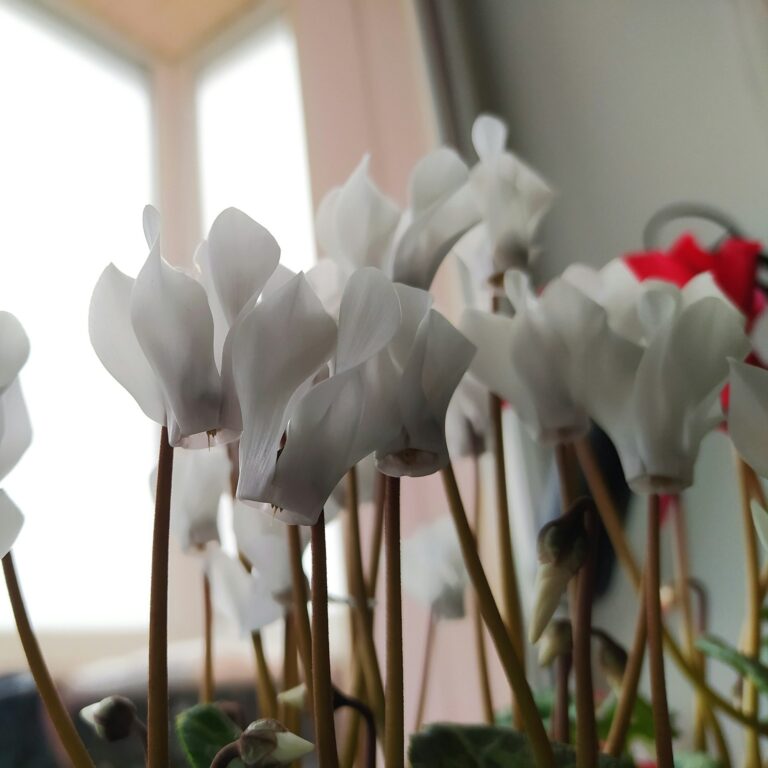With their vibrant and exotic blooms, orchids have long captivated the hearts of plant enthusiasts and collectors. These intricate plants, known for their delicate beauty and intricate root systems, require specific care to thrive.
However, one of the most common challenges orchid growers face is root rot in orchids. Root rot is a dangerous condition that affects the roots of orchids, leading to their deterioration and eventual death if left unaddressed.
To prevent the plant from dying, you must know the causes of root rot in orchids. The most common causes of orchid root rot are overwatering, inadequate ventilation (poor air circulation around the orchids), and harmful pathogens. Once you understand the causes, fixing the problem on your plant will be easier.
In this article, we delve into the various factors contributing to the development of root rot in orchids, shedding light on the importance of proper orchid care practices to ensure these plants’ long-term health and vitality.
5 Causes of Orchid root rot.
Root rot is a common problem that affects most plants. And because roots are deep inside the soil and not visible, you must trust your gut when caring for the plants. That means you have to stop bad practices that cause root rot in orchids.
So, what are the causes of orchid root rot?
- Overwatering
- Poor air circulation
- Contaminated potting containers
- Low temperatures
- Insufficient lighting
Overwatering
Orchids have specialized roots adapted to their natural epiphytic habitat, typically growing on trees or rocks with good air circulation. These roots can absorb moisture and nutrients from the air rather than relying solely on their root system.
When orchids are overwatered, the growing medium becomes excessively wet, leading to poor drainage and prolonged saturation of the roots. The roots become deprived of oxygen, which is essential for their respiration process.
Without sufficient oxygen, the roots start to suffocate and become more susceptible to infections caused by root rot pathogens, such as fungi and bacteria.
Excessive moisture and lack of oxygen create a favorable environment for these pathogens to thrive. They attack the weakened and damaged roots, breaking them down and causing them to rot.
As root rot progresses, the roots become mushy and discolored and can emit a foul odor. The decayed roots lose their ability to absorb water and nutrients effectively, compromising the overall health and vitality of the orchid plant.
Furthermore, excess water in the soil creates conditions that promote the growth of harmful microorganisms. These pathogens can further invade the roots and exacerbate the root rot problem, leading to more severe damage.
It is important to note that orchids have different water requirements than other potted plants. Their roots need periods of dryness between watering to allow for proper air circulation and prevent waterlogged conditions. Overwatering disrupts this balance and creates an environment that favors the development of root rot.
Poor air circulation
Poor air circulation around the roots of orchids can contribute to the development of root rot. Orchids, especially epiphytic species, have adapted to grow in environments with good airflows, such as the gaps and crevices of trees or rocks.
When you plant orchids in pots or containers, you must replicate these natural conditions as much as possible to ensure their well-being.
Insufficient air circulation creates a stagnant microenvironment around the orchid’s root system. This stagnant air prevents adequate drying of the roots after watering and hinders the exchange of gases, particularly oxygen and carbon dioxide. As a result, the root zone remains excessively humid, which is conducive to the growth of harmful microorganisms.
That leads to the growth of fungi and bacteria. These organisms then penetrate the roots, causing infections that lead to root rot.
Additionally, the lack of oxygen in the stagnant air restricts the root’s respiration process. Like other living organisms, roots require oxygen to perform cellular functions and maintain health. Insufficient oxygen supply due to poor air circulation weakens the roots, making them more susceptible to damage and infections.
You can prevent root rot by providing the plant with adequate airflow. You can achieve this by placing orchids in areas with gentle air movement, such as near a fan or an open window. Avoid overcrowding plants or placing them in enclosed spaces with limited airflow.
Promoting proper air circulation can help maintain a drier root zone, reduce the risk of pathogen growth, and improve overall root health.
Contaminated potting containers
Another cause of root rot in orchids is using contaminated containers. These containers tend to introduce pathogens to the root system. Pathogens, such as fungi and bacteria, can reside in old potting containers or on the surfaces of reused containers, ready to infect the delicate roots of orchids.
When you pot orchids in contaminated containers, the pathogens come into direct contact with the root system. These microorganisms can enter the roots through tiny wounds or natural openings, such as root tips or emerging aerial roots. Once inside the roots, they establish infections and initiate the process of root rot.
Also, potting soil can contaminate the roots. The pathogens in the potting media can directly invade the roots, leading to root rot.
The best way to prevent root rot caused by contaminated potting containers or media is by using clean and sterile materials when repotting orchids. When reusing containers, thoroughly clean and sanitize them before use.
You can clean them with mild soap and water and then disinfect them with a diluted bleach solution or a commercial disinfectant for gardening.
Similarly, using fresh, high-quality potting media specifically formulated for orchids is important. Ensure that the potting mix is sterile and free from any potential pathogens.
Low temperatures
Low temperatures can indirectly contribute to root rot in orchids by weakening the plant’s defense mechanisms and creating conditions favorable for the growth of root rot-causing pathogens.
Orchids are tropical plants that thrive in warm and humid environments. When subjected to low temperatures, especially below their optimal temperature range, orchids can experience physiological stress. This stress weakens the plant’s overall health and vitality, making it susceptible to various diseases, including root rot.
Under cold temperatures, the metabolic processes of the orchid slow down, including the root’s ability to absorb nutrients and water effectively. As a result, the root system may become less efficient in taking up essential elements necessary for healthy growth. This compromised nutrient uptake weakens the roots, making them more susceptible to infections by root rot pathogens.
Additionally, low temperatures often coincide with increased humidity levels. Cold and humid conditions can create an environment that promotes excessive moisture around the roots. This prolonged moisture, combined with reduced metabolic activity, can lead to poor drainage and increased saturation of the root system.
Reduced nutrient uptake, increased moisture, and diminished metabolic activity provide an ideal environment for root rot-causing pathogens, such as fungi and bacteria, to thrive. These pathogens take advantage of the weakened roots and initiate infections, leading to root rot.
Avoid exposing them to extremely cold temperatures or drafts. Instead, keep orchids in a location with adequate warmth and avoid sudden temperature fluctuations. Ensure the area has proper ventilation and airflow. It helps prevent moisture buildup and promotes a drier root environment.
What are the signs of root rot in orchids?
When a plant has a problem with the leaves, it’s easy to identify and fix it. However, when it comes to roots, they are in the soil, and it can be hard to notice if they have a problem.
The easier way to determine if there is root rot without removing the plant from the soil is by following the plants’ signs and symptoms. These signs are often noticed on other parts of the plant, such as leaves and stem.
Here are the common signs of root rot in orchids:
Yellowing and Wilting Leaves
One of the early signs of root rot is the yellowing of leaves. The yellowing may start from the bottom leaves and gradually progress upward. The leaves may also appear limp or wilted, indicating that the roots cannot absorb sufficient water and nutrients.
Mushy or Brown Roots
As root rot progresses, the affected roots may turn brown or black and become soft and mushy to the touch. You have to remove the plant from the soil to confirm this diagnosis. Healthy roots should be firm and have a whitish or greenish appearance. Rotting roots may also emit a foul odor.
Reduced Growth and Poor Flowering
Orchids suffering from root rot often exhibit stunted growth and a decline in overall vigor. The plant may produce fewer or smaller leaves, and there may be a noticeable decrease in the number and quality of flowers. The lack of a healthy root system affects the plant’s ability to take up nutrients and energy for growth and flowering.
Soggy or Foul-Smelling Potting Mix
If the potting mix remains consistently wet and has a foul odor, it could indicate excessive moisture retention caused by root rot. The presence of excess moisture encourages the growth of root rot-causing pathogens.
Detached or Loose Roots
Severely rotted roots may detach easily from the plant when gently tugged. If you notice that the roots are coming off without much resistance or appear loose and disconnected from the plant, it could be a sign of advanced root rot.
How to treat orchid root rot.
Now that you know the causes of root rot, you must also know how to treat root rot in orchid plants if the roots are already rotten. Here are steps you can take to address root rot:
Remove the Orchid from the Pot
Carefully remove the orchid from its pot, gently shaking off the excess potting mix. Inspect the roots for signs of rot, such as mushiness, discoloration, or a foul odor.
Trim Affected Roots
Trim away the affected roots using clean and sterilized pruning shears or scissors. Cut until you reach healthy, firm tissue. Remove all the visibly rotten or mushy roots, even if you must remove a significant portion of the root system. This step helps prevent further spread of the infection.
Clean and Disinfect
Thoroughly clean the pot and any tools used with mild soap and water. Rinse them well and disinfect them with diluted bleach or commercial disinfectant to kill any remaining pathogens. This helps prevent reinfection.
Treat with Fungicide
After trimming the roots, you can treat the remaining healthy roots with a fungicide specifically formulated for orchids. Follow the instructions on the fungicide label for application rates and frequency. This treatment helps control any remaining fungal pathogens.
Repot in Fresh Potting Mix
Select a clean and appropriately sized pot with good drainage. Prepare a fresh orchid potting mix that is well-draining and suitable for your orchid species. Place the orchid in the new pot, gently spreading the remaining healthy roots. Add the fresh potting mix, ensuring it surrounds the roots but does not compress too tightly.
Adjust Watering and Care Routine
After repotting, adjust your watering and care practices to promote healthy root growth. Allow the potting mix to dry partially between waterings, providing the right moisture and air circulation balance. Avoid overwatering or keeping the orchid in overly humid conditions.
Monitor and Provide Optimal Conditions
Regularly monitor the plant for any signs of stress or recurrence of root rot. Ensure the orchid is placed appropriately with proper lighting, temperature, and airflow. Maintain a clean and hygienic growing environment to prevent reinfection.
Remember that recovering from root rot takes time, and it’s important to be patient and diligent in your care routine. Regularly inspect the orchid for signs of improvement and adjust your care practices as needed.
What is the difference between healthy and rotten orchid roots?
Differentiating between healthy and rotten orchid roots is essential for assessing the plant’s overall health and identifying potential issues. Here are some key differences between healthy and rotten orchid roots:
Color
- Healthy roots: Healthy orchid roots are typically light green or white. They indicate active growth and the presence of chlorophyll, which is responsible for photosynthesis.
- Rotten roots: Rotten roots often appear brown, black, or dark. They may have patches of discoloration, indicating decay or fungal/bacterial infection.
Texture and Firmness
- Healthy roots: Healthy orchid roots are firm, puffy, and plump. They have a certain level of resilience when gently pressed or squeezed.
- Rotten roots: Rotten roots tend to be soft, mushy, or even slimy in texture. They lack firmness and can break apart easily.
Odor
- Healthy roots: Healthy orchid roots typically do not have a strong or foul odor. They may have a slightly earthy or plant-like scent.
- Rotten roots: Rotten roots often emit a noticeable unpleasant odor, ranging from musty and moldy to rotten or putrid.
Appearance
- Healthy roots: Healthy orchid roots have a smooth surface and may exhibit signs of new growth, such as emerging root tips or tiny root hairs. They are generally uniform in appearance.
- Rotten roots: Rotten roots may show visible signs of decay, such as lesions, dark spots, or areas of sliminess. They can have a deteriorated or discolored appearance.
Attachment to the Plant
- Healthy roots: Healthy orchid roots are firmly attached to the base of the plant and form a strong network. They anchor the plant securely.
- Rotten roots: Rotten roots may become loose, detached, or easily separable from the plant. They may show signs of decay at their attachment points.
It’s important to note that healthy orchid roots naturally undergo desiccation or die off as part of the natural growth cycle. This shedding of older roots is normal and not necessarily an indication of root rot. Focus on identifying roots that display signs of decay, unusual discoloration, softness, or a foul odor.
FAQs
Should I cut rotting orchid roots?
If your plant has rotten roots, you should cut them from the plant before repotting. Cutting them off prevents further spread to the healthy leaves. Use sharp, clean, and sterilized shears to trim dead roots.
Can a plant recover from root rot?
A plant can recover from root rot if you diagnose and fix the problem during its early stages. That means cutting off the affected roots. If all the roots are affected, they won’t recover because the plant requires healthy roots to grow.


